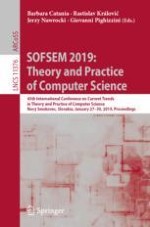2019 | OriginalPaper | Chapter
Existence Versus Exploitation: The Opacity of Backdoors and Backbones Under a Weak Assumption
Authors : Lane A. Hemaspaandra, David E. Narváez
Published in: SOFSEM 2019: Theory and Practice of Computer Science
Publisher: Springer International Publishing
Activate our intelligent search to find suitable subject content or patents.
Select sections of text to find matching patents with Artificial Intelligence. powered by
Select sections of text to find additional relevant content using AI-assisted search. powered by
